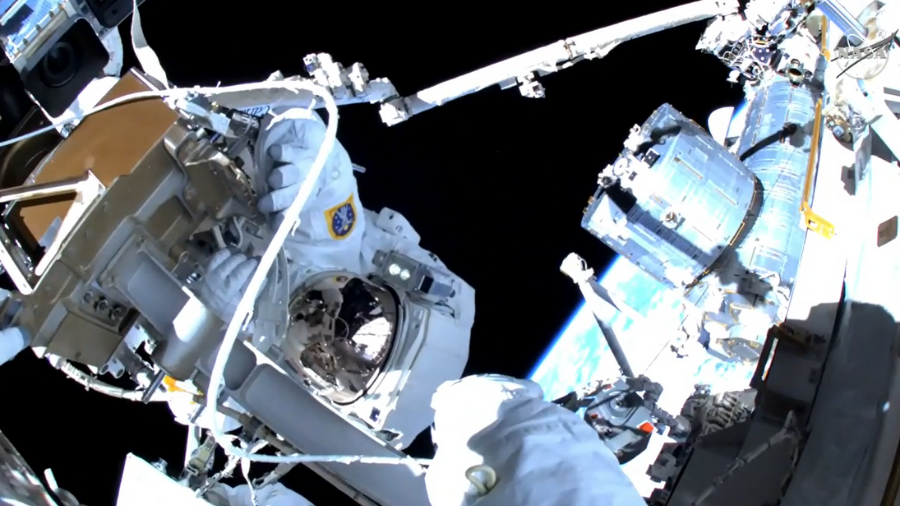
NASA astronaut Raja Chari, teamed with Germany’s Matthias Maurer of the European Space Agency (ESA), wrapped up a six-hour and 54-minute session of Extravehicular Activity (EVA) outside the International Space Station (ISS) on Wednesday. Despite a delayed start, the duo—with Chari making the second spacewalk of his career and Maurer becoming only the fourth German national to perform an EVA—installed hoses onto a Radiator Beam Valve Module (RBVM) and routed power and data cables between Europe’s Columbus lab and its Bartolomeo payloads-anchoring platform. However, the delayed start to the EVA caused several low-priority tasks to be deferred. It was the fourth and last planned EVA of the current Expedition 66.
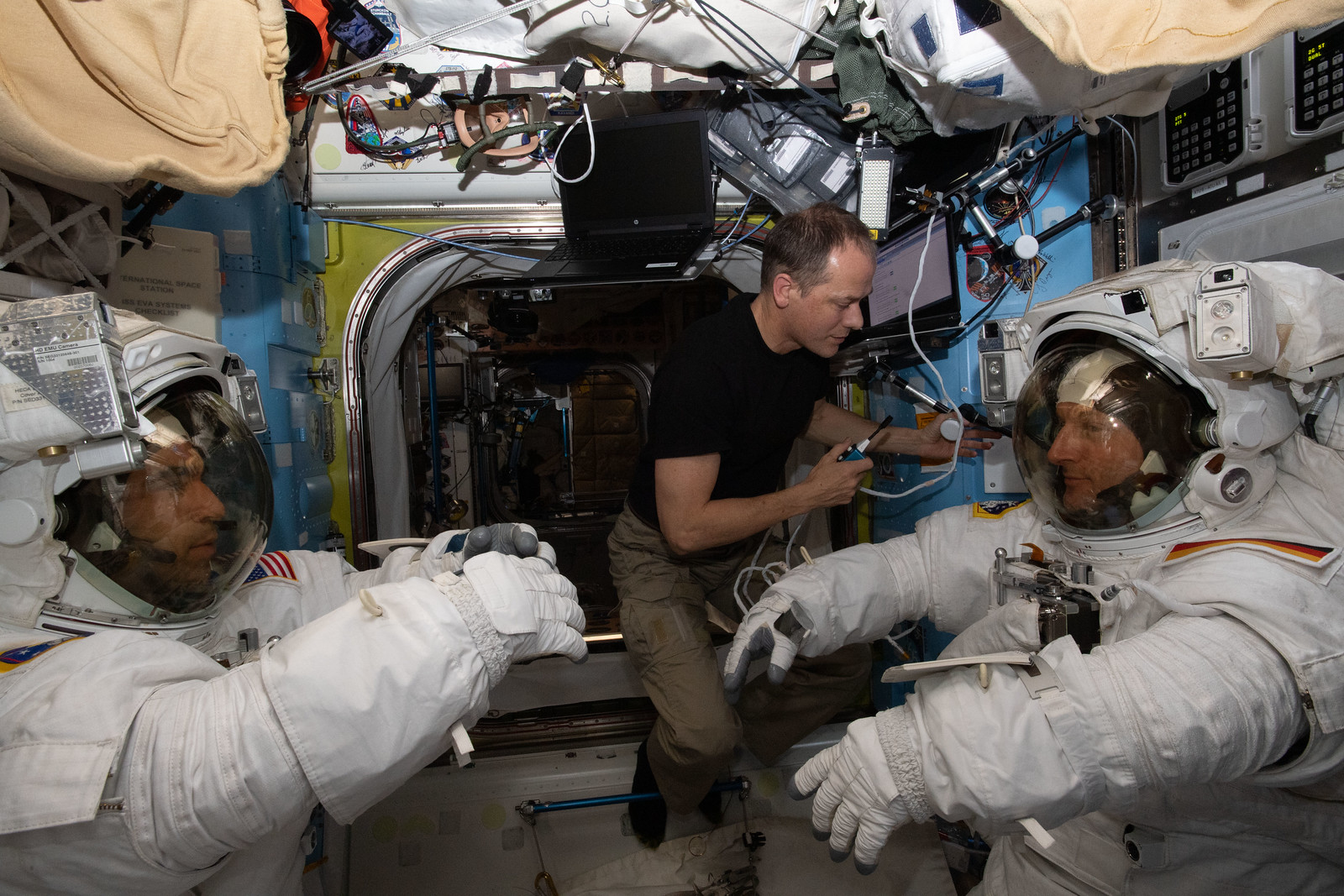
Today’s spacewalk was also designated “U.S. EVA-80”, the 80th excursion in U.S.-built Extravehicular Mobility Units (EMUs) to have been performed out of the station’s Quest airlock, in the absence of the Space Shuttle, since Expedition 4 astronauts Carl Walz and Dan Bursch undertook U.S. EVA-1, way back in February 2002. It came only eight days after Expedition 66’s Kayla Barron and Chari flawlessly executed EVA-79 to install a modification kit for the next set of Boeing-built ISS Roll-Out Solar Arrays (iROSAs). With the completion of EVA-80, Chari has now accrued 13 hours and 48 minutes in his first two spacewalks and Maurer six hours and 54 minutes.
The crew member designations for today’s spacewalk were kept under wraps until after EVA-79, with NASA naming Chari and Maurer only late last week. In a media briefing, EVA-80 Flight Director Paul Konyha rationalized the decision by noting that a “lot of little variables” play into the selection process for each EVA crew. These include crew member performance and physical condition, any issues with space suits and the successful outcome of the last spacewalk. It also marked a short transition from Chari as he moved from the EV2 role into that of chief spacewalker, EV1, with red stripes on his suit.
“Largely interchangeable and variable, depending on the content of the EVA” was NASA’s summary of the decision to assign EV1/EV2 roles to spacewalkers. “Effort is made to give every crew member a change to be EV1 when possible so they get experience with hatch ops. EV1 is prime for opening/closing hatch.”
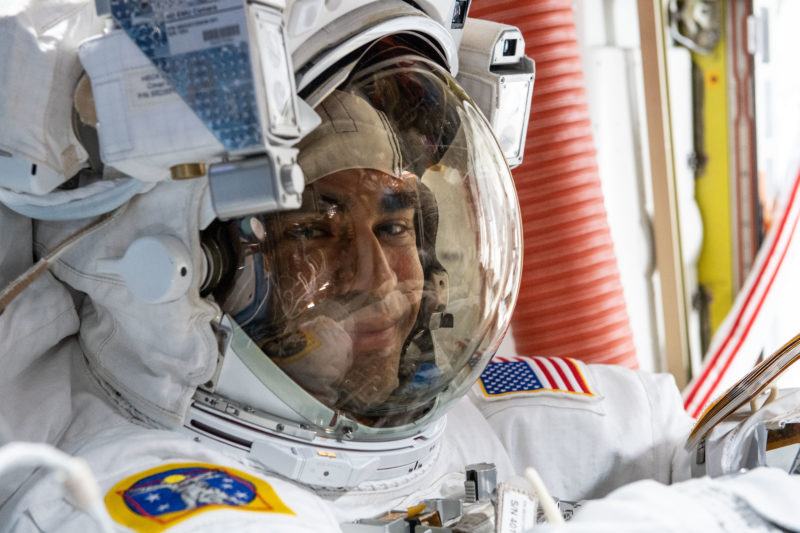
On 17 March, the crew dove directly into EVA-80 preparations, completing EMU Enhanced Caution and Warning System (ECWS) on-board training and practicing EVA Cuff Checklist procedures. The space suits were resized and on 18 March the crew reviewed procedures, timelines and configured their tools.
For his part, Chari was overwhelmed by his first EVA and excited for his second. “First spacewalk didn’t disappoint,” he tweeted last week. “Cameras don’t do it justice, but do give a sense of how hard it can be to concentrate when there’s so much to look at.”
The principal focus of EVA-80 was the installation of jumper hoses onto a Radiator Beam Valve Module (RBVM), a piece of hardware which is responsible for routing ammonia coolant through the station’s heat-rejecting radiators to maintain external systems at their requisite temperatures. It forms part of the External Active Thermal Control System (EATCS), which has two “loops” on the starboard-side S-1 truss and the port-side P-1 truss. Chari and Maurer’s work today emphasized the RBVM on the P-1 side.
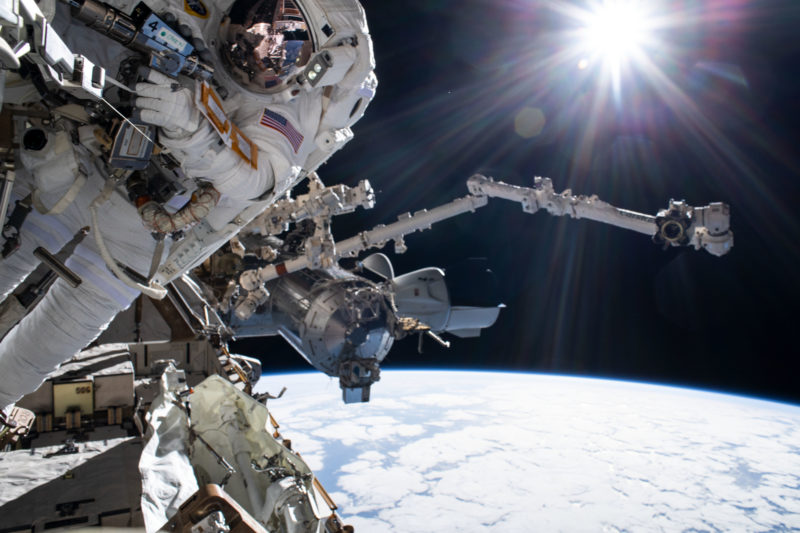
Several years ago, a slow ammonia leak was detected in the P-1 EATCS and gradually accelerated to a point of serious concern. Signatures from the ammonia accumulator in the loop showed a steady drop in ammonia quantities in 2016-2017 and the Robotic External Leak Locator (RELL)—a tool brought uphill aboard the OA-4 Cygnus cargo ship in December 2015—managed to successfully pinpoint the leak. It lay in the vicinity of a pair of flexible jumper hose assemblies which connected to one of the three deployable radiators. In March 2017, Expedition 50 spacewalker Thomas Pesquet inspected the location and acquired GoPro imagery and video to enable engineers to better characterize the leak.
And in March 2018, Expedition 55 spacewalker Ricky Arnold removed the troublesome jumpers for subsequent return to Earth, teardown, inspection and root-cause failure investigation. It was anticipated this would help to determine if the leak was a unique problem or a fleetwide issue. Results determined that the leak came from one of two Fluid Quick Disconnects (QDs), both of which were found to contain significant brown deposits, thought to be non-volatile ammonia residue.
The refurbished loops were returned to Earth and returned to space aboard SpaceX’s Cargo Dragon ahead of today’s installation back onto the P-1 EATCS.
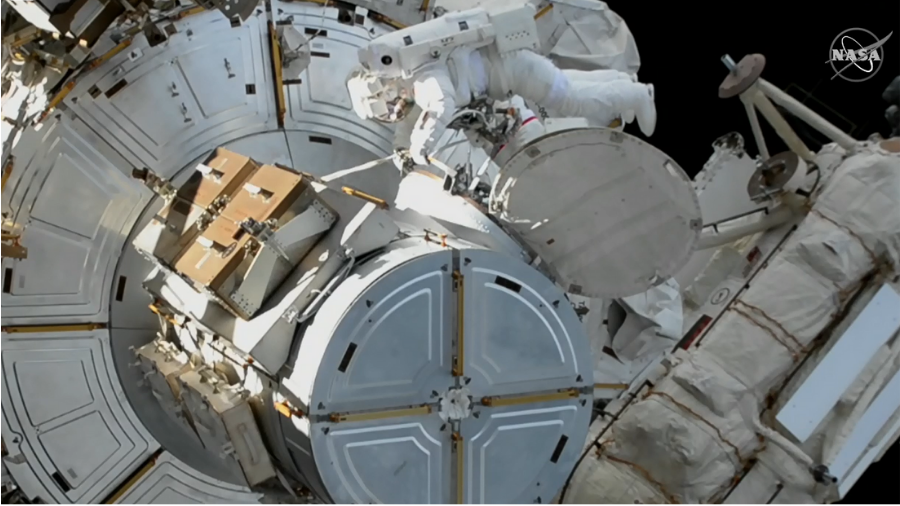
Leading EVA-80 was a team headed by Flight Director Paul Konyha, who described this as “two EVAs happening at once”, with Chari assigned his set of tasks, whilst anchored to the 57.7-foot-long (17.6-meter) Canadarm2, and Maurer undertaking his own work in a “free-floating” configuration. Lead EVA-80 Officer Sandy Fletcher labeled this “a very challenging EVA” which required the spacewalkers to complete a multitude of tasks. The two men emerged from the station’s Quest airlock at 8:32 a.m. EDT and, laden with tool bags, were expected to go their separate ways for the next several hours.
However, within minutes of the start of the EVA, an issue was found with the camera and light assembly on Maurer’s helmet, which appeared to be loose. “The solution might involve some wiring,” tweeted ESA. “In the meantime, they are enjoying the view.” Finally, one hour into EVA-80, and in the midst of orbital night, Chari completed the fix with a spare wire, “traditionally used as a backup tether”, according to ESA.
The duo worked swiftly to make up for lost time. Maurer headed portward along the station’s truss to stow his tool bag on a Crew and Equipment Translation Aid (CETA) for movement to the worksite. He then collected a previously deployed cable reel bag and unreeled an ethernet cable, before moving to the Camera Port (CP)-8 location. Here Maurer pre-positioned the end of the cable at the camera group’s stanchion base.
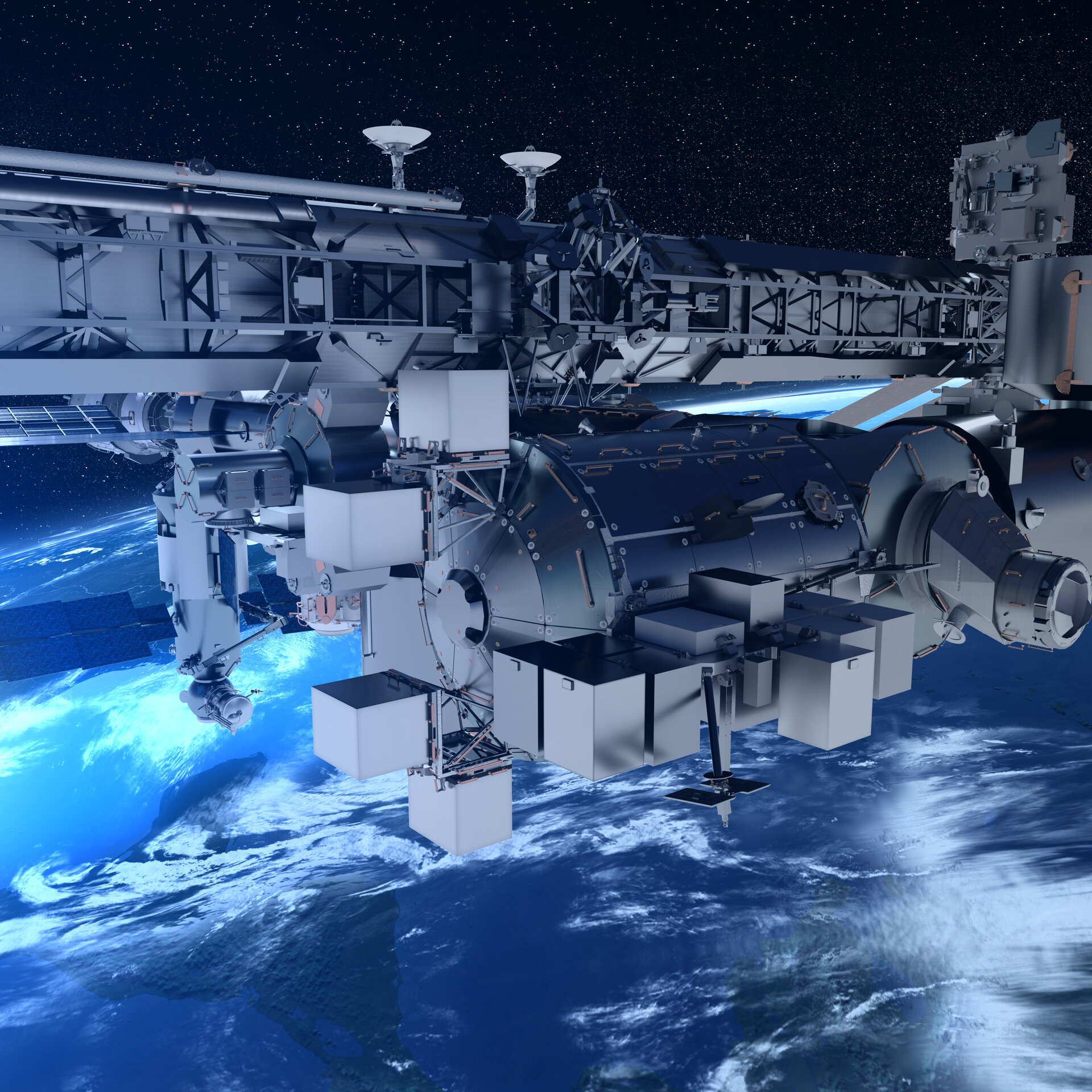
Retracing his “steps”, the first-time spacewalker proceeded to drop off the empty cable reel bag at the CETA and took a new bag of tools to the U.S. Destiny lab. Retrieving a cable adapter, Maurer worked his way along the length of Europe’s Columbus lab, to the starboard end-cone. Here he installed a jumper to enable power and data connectivity with the Bartolomeo payloads-anchoring platform.
Maurer closed several cable clamps on Bartolomeo to permit future robotic payload activities. His Columbus work thus done, Germany’s fourth spacewalker headed over to Japan’s Kibo lab to close a loose “flap” of thermal blanket, wire-tying it securely to handrails.
In the meantime, Chari began his EVA-80 activities by collecting an Articulating Portable Foot Restraint (APFR). He installed it onto Canadarm2 and ingressed it. Chari was then “flown” to the P-1 RBVM worksite. By the three-hour mark of EVA-80, as Maurer wrapped up his tasks at Columbus and Kibo, Chari completed the installation of the two ammonia jumpers onto the RBVM.
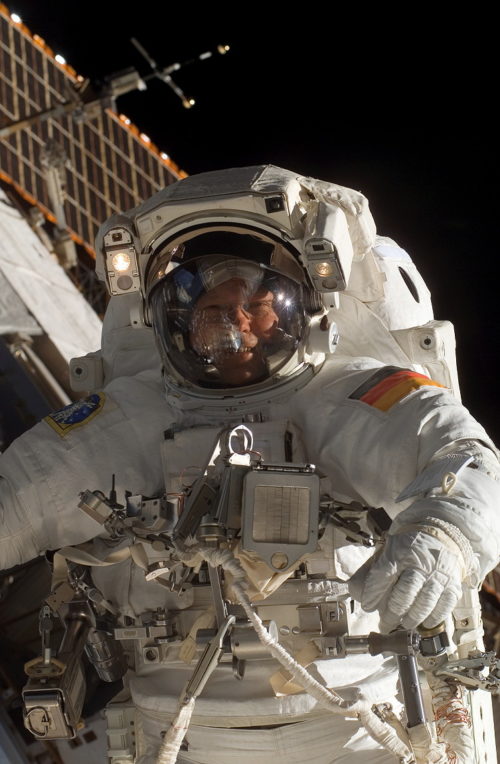
Plans called for the two men to meet up at the station’s P-3 truss to exchange tool bags, but as EVA-80 passed its fourth hour flight controllers were considering calling it a day and deferring several low-priority tasks to a future spacewalk.
“We’re just looking at the time remaining and what tasks fit best in that time,” Ground Intravehicular (IV) CapCom Stephanie Wilson told them. “We’re not tracking any issues, just getting the forward plan together for you.”
Those remaining tasks included the installation of a new Wireless Access Port Capable External High Definition Camera onto CP-8 and wire-tied the cabling to ensure that it would not interfere with its ability to “pan” and “tilt”. By now heading over six hours, the spacewalkers cleaned up their respective worksites and returned to Quest.
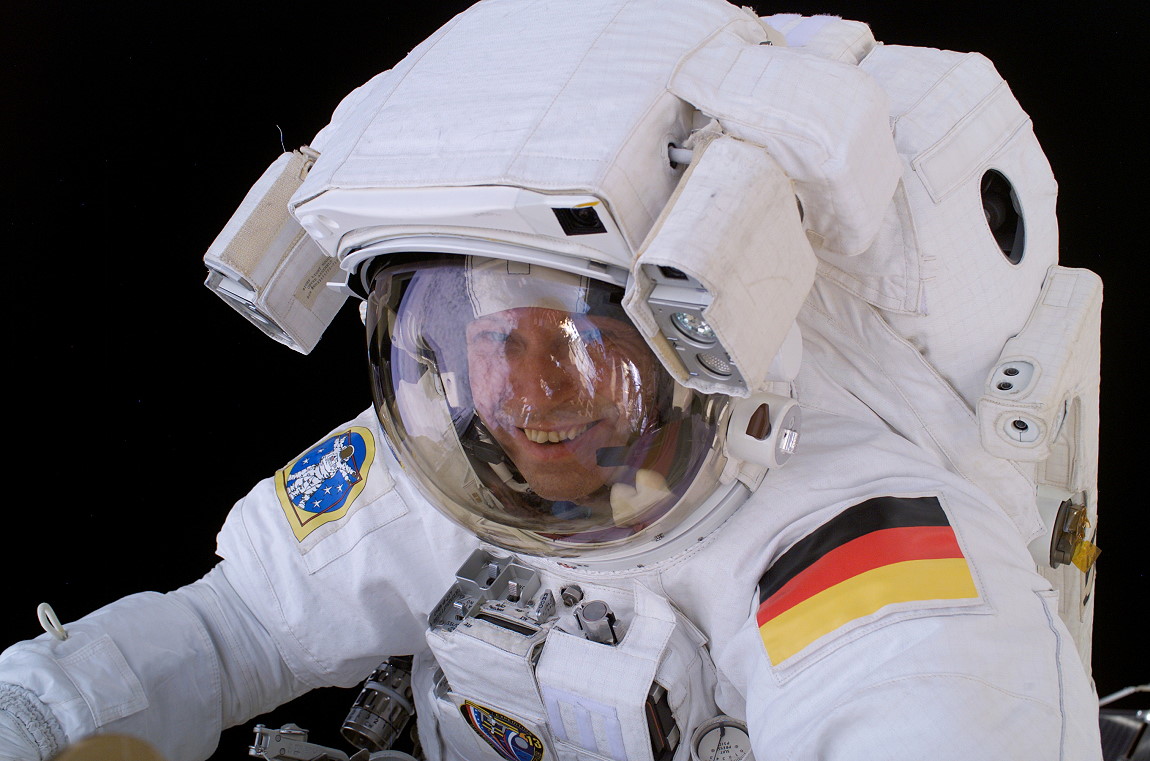
EVA-80 ended at 3:26 p.m. EDT after six hours and 54 minutes. Interestingly, that was exactly the same amount of time (to the very minute) that Chari spent outside on EVA-79 last week. And whilst Maurer became the fourth German—after Thomas Reiter, Hans Schlegel and Alexander Gerst—to perform a spacewalk, he holds a unique record for the longest single EVA ever performed by a German national.
The previous record-holder, Schlegel, logged six hours and 45 minutes on an EVA to install the Columbus lab on shuttle mission STS-122, way back in February 2008. Maurer also sits in second place behind Reiter on the list of Germany’s most experienced spacewalkers. Reiter logged over 14 hours in total across three EVAs aboard Russia’s Mir complex and the ISS between 1995 and 2006.
With the completion of EVA-80, the fourth and final spacewalk of Expedition 66 is over. Two U.S. spacewalks last week and last December, plus a Russian excursion in January, have totaled over 27 hours. Current plans are for the next set of iROSA arrays to arrive aboard SpaceX’s CRS-26 Cargo Dragon in the October 2022 timeframe, pushing their installation EVAs into the fall and likely Expedition 68. But NASA has noted that the next pair of U.S. EVAs might occur later this summer. “Potential for two additional iROSA prep EVAs late this summer,” NASA advised AmericaSpace, “to continue preparing other sites for new arrays (1A and 3B)”.




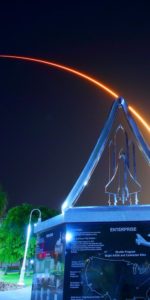
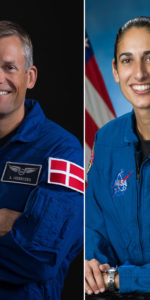
3 Comments
3 Pings & Trackbacks
Pingback:Crew-3 Returns Home, Wraps Up Six Months on Space Station - AmericaSpace
Pingback:SpaceX Launches 25th Dragon Cargo Mission, Heads for Saturday ISS Docking - AmericaSpace
Pingback:SpaceX Launches 25th Dragon Cargo Mission, Heads for Saturday ISS Docking -